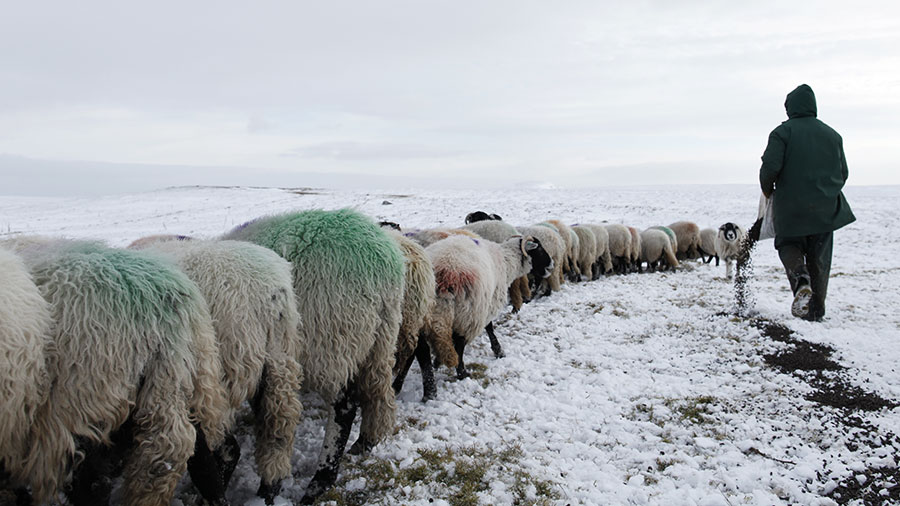5 ways to improve flock carbon efficiency before winter
 © AdobeStock/Laurence
© AdobeStock/Laurence Lamb growth should be scrutinised as winter approaches so that cost-effective decisions can be made to protect margins for this year and next and improve farm carbon efficiency.
This is according to Kirsten Williams, senior sheep and beef specialist at SAC Consulting, who says the longer lambs are on farm, the greater the total methane output and carbon footprint.
“Conversations around reducing carbon footprint can still be a bit of a turn-off for some farmers,” says Kirsten, who supports farmers as part of SAC’s Farming for a Better Climate (FFBC) initiative to find practical ways to move to net-zero farming.
See also: 6 ways to future-proof your sheep business
“In Scotland, there are over 90 breeds of sheep and a mix of lowland and hill, so there’s no ‘one size fits all’ for reducing methane emissions on farm.”
As the sheep system moves from grazing to preserved fodder and bought-in concentrate feed for many farms, she advises focusing on the following five areas.
1. Time on farm
- The longer lambs are on farm, the more they are affecting the forage available for next year’s lamb crop.
- Analyse daily liveweight gains (DLWGs) and analyse if it is cost-effective to finish or sell as store.
- Ask what forage lambs will be taking away from the ewes for tupping and winter keep.
- Would it be more cost-effective to sell as store sooner for a lower price but with less cost?
2. Health, nutrition and genetics
- A robust flock health plan helps gains at every stage of production.
- At this time of year, a high worm burden will limit growth and increase finishing time, so regular faecal egg counts can inform drenching and help establish what is limiting lamb growth.
- Are protein and energy balanced in the feed?
- Is there a genetic pattern to poor performance?
- Is lameness an issue – research shows it can affect growth by up to 7.5%.
3. Performance from forage
- Feed as much home-grown grazed grass and forage as you can.
- This avoids the cost and carbon footprint of bought-in and imported feed.
- Try rotational grazing to promote grass quality and biodiversity.
- Use clover and other legumes to improve protein in the sward and fix nitrogen.
- Look at each stage of production to maximise output. Is the post-weaning stage letting you down?
4. Productivity
- Number of lambs reared remains the key metric for profit and carbon efficiency.
- A ewe with twins has much lower emissions than one with a single.
5. Time and data
- Time taken analysing the information you have about your flock is well spent.
- Breeding efficiency into the flock can be slow, but cumulative benefits and long-term productivity wins are possible.
